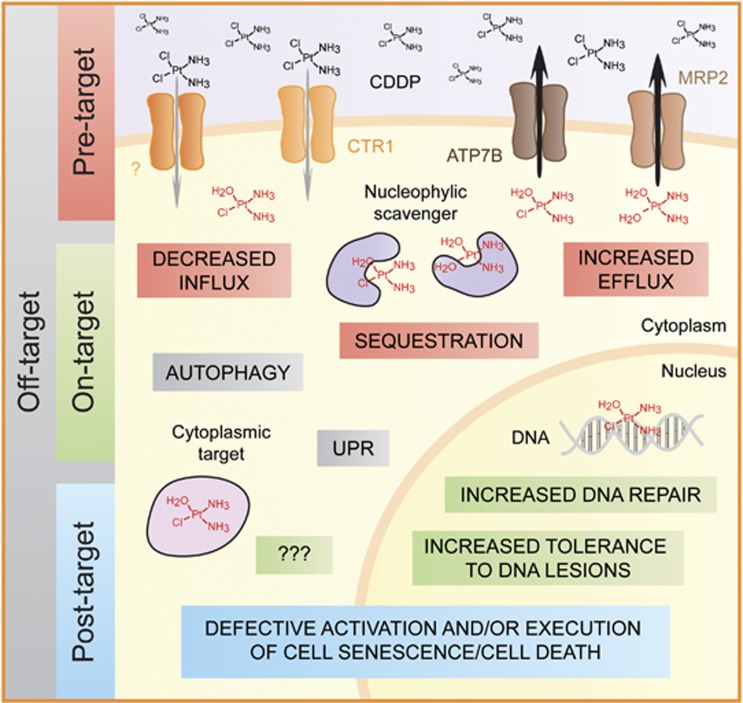Figure 2.
Molecular mechanisms of cisplatin resistance. Malignant cells can lose their sensitivity to the cytostatic/cytotoxic activity of cisplatin (CDDP) as a result of a wide panel of genetic or epigenetic defects. These alterations can (i) affect processes that precede the actual binding of CDDP to its targets (pre-target resistance); (ii) potentiate the ability of cells to repair the molecular damage caused by CDDP (on-target resistance); (iii) impair the transmission of signals that normally relay such a CDDP-induced damage to cell senescence or apoptosis (post-target resistance) or (iv) stimulate the delivery of pro-survival signals that antagonize CDDP cytotoxicity although they are normally not elicited by this drug (off-target resistance). Of note, CDDP resistance is generally multifactorial, that is, it relies on the activation of several, non-overlapping mechanisms that concur to limit the cytostatic/cytotoxic effects of CDDP at multiple levels. At least in part, this explains why efficient strategies to increase the sensitivity of human neoplasms to CDDP are still lacking in spite of a prolonged and intense wave of investigation. ATP7B, ATPase, Cu2+ transporting, β polypeptide; CTR1, copper transporter 1; MRP2, multidrug resistance-associated protein 2; UPR, unfolded protein response. CDDP aquation is depicted in red

